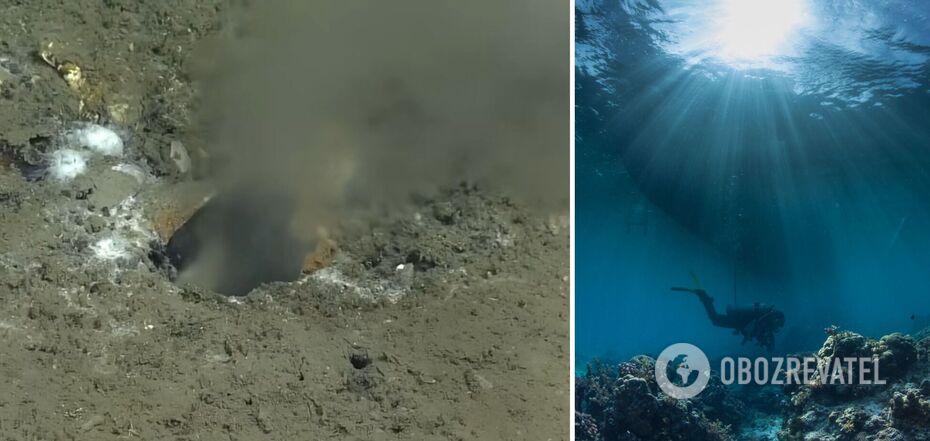Life
Hole has been discovered at the bottom of the ocean through which water is seeping: it threatens a large-scale disaster
A water leak has been discovered at the bottom of the Pacific Ocean, which is occurring through a hole that formed for an unknown reason. Fortunately for humanity, it is not the case that the ocean is flowing into some kind of planetary water supply system, but the other way round. But the good news ends there.
Scientists reported on the study in the journal Science Advances. They called the source at the bottom of the ocean the "Pythian Oasis" (to watch the video, scroll to the end).
The hole at the bottom of the ocean was discovered by accident back in 2015, when Brendan Phillip, then a graduate student and now a White House political adviser, noticed air bubbles rising from an unknown source during ocean research.
At the time, the scientists assumed it was methane rising from the ocean floor, but it turned out not to be the case.
"They ... saw not just methane bubbles, but a liquid coming out of the seabed, like a fire hose. That's something I've never seen, and as far as I know, hasn't been seen before," said seabed geologist and one of the authors of the paper, Evan Solomon.
Bubbles rising from the ocean floor are often the harbingers of hydrothermal vents, where scientists find fascinating biological activity. But the Oasis of Pythias is something completely different, and the fact that it is leaking fluid is causing scientists concern.
They assume that if too much fluid flows out of the fault into the open ocean, a large part of the United States will be threatened by a powerful earthquake, because the fluid leakage occurs in a place called the Cascadia Subduction Zone. This is where the two tectonic plates that make up the Earth's crust meet and slide alongside each other.
The fluid flowing through the fault, as scientists suggest, serves as a kind of lubricant between these plates, which ensures their smooth movement.
"A mega-fault zone is like an air hockey table. If the fluid pressure is high, it's like air being turned on, which means there's less friction and the two plates can slide. If the fluid pressure is lower, the two plates lock together and then tension can build up," Solomon explained.
Thus, if the fluid between the plates reaches a critically low level, tension will build up between the tectonic plates, which eventually has to go somewhere. When the tension reaches its peak, the plate will have to jerk to a new position, and this jerk will cause an earthquake.
Scientists believe that the release of tension in the Cascadia subduction zone could trigger a magnitude 9 earthquake, which would affect many residents of the northwestern United States.
The main problem is that scientists can only observe the phenomenon, as they cannot influence the future behaviour of tectonic plates in any way. But such observation will help prepare for a possible natural disaster.
"The Pythian Oasis provides a rare window into the processes taking place deep on the seabed, and the chemical composition suggests that this fluid comes from an area near the plate boundary," said Deborah Kelly, an oceanographer and one of the study's authors.
Earlier, OBOZREVATEL reported that scientists had discovered mountains five times higher than Mount Everest around the core in the centre of the Earth.
Subscribe to OBOZREVATEL's Telegram and Viber channels to keep up with the latest news.




























